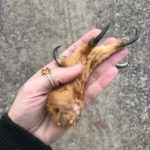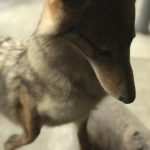By Liz Neroni, Naturalist

Preservation Parks provides many programs to all ages, which is my main job as a naturalist. Sometimes that means following a curriculum and going to a school or taking a request and heading to a community event. I also teach people through the creation of exhibits and displays, as well as, hosting many activities within the parks.
No matter the venue, I use props. Most of these props are real parts of an animal. These may include mounts, wings, skulls, skins, feet, shells, and more. The two questions that I’m always asked after showing people the items are, “Did you kill it?” and “Is it real?”.
After going over the difference between being real and alive, I tell the wide-eyed students that I would never go out and kill an animal just so they could have a chance to interact with it. I explain that most animals we acquire are hit by cars. Others are collected due to window collisions, hunting, or just old age. Instead of burying the deceased animal, we preserve it for education.
At first it seems kind of gross and even a little weird that I use these items as tools to educate people. However, placing an owl talon in someone’s hand or looking at a mounted bird and being able to see all the beautiful iridescent feathers and ID traits up close, is way more impactful than simply talking about it.

Taxidermy is a way to tell a story. The physical and even behavioral characteristics of the animals can be shown through this art form. We can gain a better understanding of what the animal eats, where it lives, and the impressive adaptions that helps it survive. While the specimens themselves are preserved, they also help to preserve, strengthen, and in some instances create the connection people have to nature.
Throughout the years we have been lucky to have assistance with creating that connection. Thunderbay Taxidermy in Chillicothe is a wonderful resource, and we have many great specimens to share with the public because of their work. A special thanks goes to local retired taxidermists Jay and Di Bailey for the large taxidermy collection they are donating for use in our education efforts. Their contribution will allow us to continue our mission of connecting people to nature, which I’m very thankful for, even if that means I must continue to explain that “I didn’t kill it.”






